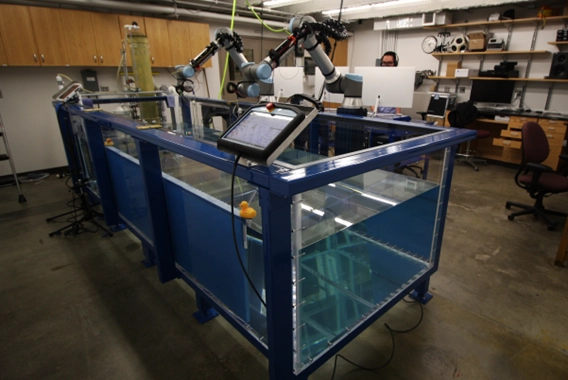Brigham Young University (BYU) has created an underwater acoustics laboratory at their premises in Provo, Utah. As part of BYU’s Acoustics Research Group—the largest in the intermountain west—the lab allows students to gain experience in interdisciplinary applications, experimental techniques, and the management of uncertainty in underwater acoustical measurements.
The skills gained in this lab would otherwise be difficult for students to obtain. Obtaining large open-water data sets for underwater acoustics research and validating measurements is time consuming and costly. A laboratory system saves on costs, especially for researchers without ease of access to large bodies of water. Similarly, open-water tests are often prone to noise and unpredictability with ever changing environmental concerns. In contrast, tank-based measurements allow for better control of the metrological environment. Measurement automation enables data to be collected quickly, efficiently and with high precision.
One of the limitations of the lab based-tank system, however, is that unwanted reflections from the surfaces of the tank can hinder measurements. One of the ways to address this, is to apply an anechoic coating to the tank surfaces.
The Apltile SF5048 is an anechoic tile ideally suited to the purpose of reducing side-wall reflections especially for ultrasonic frequencies. The Apltile SF5048 is optimised for the frequency range 20 kHz to 200 kHz and has an echo reduction greater than 30 dB over this range during testing in smaller tanks. Initial investigations at BYU have demonstrated how lining the walls of their larger tank with these panels reduces the reverberation time.
The underwater lab has already provided interdisciplinary collaboration between departments on campus, as well as institutions outside of BYU. With applications in both passive sonar and aquatic environment research, this facility provides a training ground for physics, applied physics, computer science, and applied math majors. Dr. Tracianne Neilsen says, “Our current research centers on designing and validating approaches for transfer learning and refinement that provide robust performance of machine learning algorithms for real-time ocean applications.”




